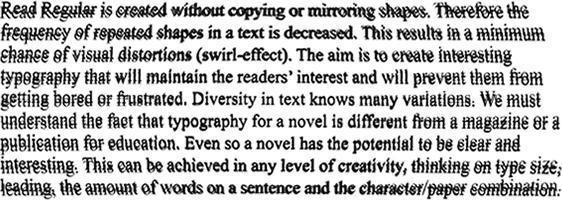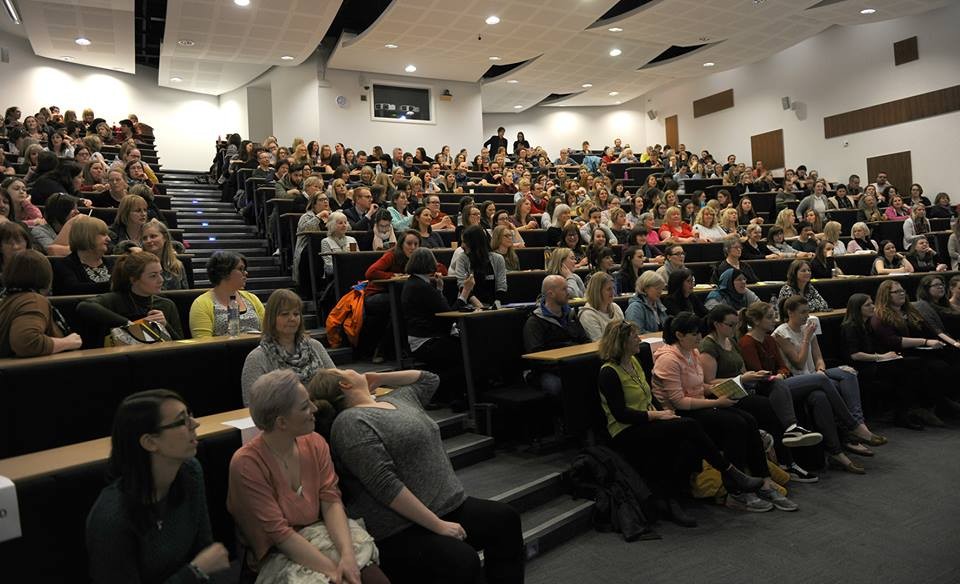Outdoor Education – two words that make any lecture automatically more interesting to me.
For Will’s input when he said we were actually going outdoors today I was as excited as any primary school child! As soon as we were allowed outside, off we went skipping away like little primary two’s.


We literally went off skipping in excitement…
As we only had twenty minutes before we had to be back into the input, we cou ldn’t go particularly far or find particularly much. However, what I did find that we could discuss was road safety, road signs and markings such as yellow lines – discussing with the children what they thought they meant. I also thought of reading things like bus time tables as this is a skill that is probably going to be relevant to their lives and is also something no one ever taught me to do.
ldn’t go particularly far or find particularly much. However, what I did find that we could discuss was road safety, road signs and markings such as yellow lines – discussing with the children what they thought they meant. I also thought of reading things like bus time tables as this is a skill that is probably going to be relevant to their lives and is also something no one ever taught me to do.
However, after the input I went off for a wonder by myself down to the riverside. I already knew about the poem stanza down at the riverside and this was originally my first thought when Will told us to find something to do with literacy in the outdoors.
I was thinking of this as an upper years outdoor education lesson for history and literacy which could meet all four of these curriculum areas (Scottish Government, 2009):
Literacy (Reading): I can make notes, organise them under suitable headings and use them to understand information, develop my thinking, explore problems and create new texts, using my own words as appropriate. LIT 2-15a (p.31)
Literacy (Writing): By considering the type of text I am creating, I can select ideas and relevant information, organise these in an appropriate way for my purpose and use suitable vocabulary for my audience. LIT 2-26a (p.36)
Health and Wellbeing: I am experiencing enjoyment and achievement on a daily basis by taking part in different kinds of energetic physical activities of my choosing, including sport and opportunities for outdoor learning, available at my place of learning and in the wider community. HWB 2-25a (p.86)
Social Studies (History): I can investigate a Scottish historical theme to discover how past events or the actions of individuals or groups have shaped Scottish so ciety. SOC 2-03a (p.283)
ciety. SOC 2-03a (p.283)
My lesson idea was to take the children down to the riverside with a notebook, first allow them to take some time to write down some words to describe what they seen, smelt, felt etc. I would give them some time to have a read of the tourist signs to see what information they would take about the Tay Bridge. I would allow some time for the children to discuss why they think we need the Tay Bridge.
Some pictures of the information signs for the Tay Bridge



My final part of the lesson would be for them to read the poem “The Railway Bridge of the Silvery Tay” by William McGonagall (no date) which reads (a small extract from the section of the poem at the riverside):
“Beautiful Railway Bridge of the Silvery Tay!
I hope that God will protect all passengers
By night and by day
And that no accident will befall them while crossing
The Bridge of the Silvery Tay
For that would be most awful to be seen
Near by Dundee and the Magdalen Green”
I would allow them to take notes from the poem stanza and give them time to discuss the poem. After going back to the classroom, I would have a copy of the poem for the children to read the full version if they wish.
Some pictures of the poem engraved at the River Tay.





When we got back to the class I would take some time for a whole class discussion on what they are learnt from the trip: from what they could initially see, smell, feel; to the history of the Tay Bridge; to McGonagall’s poem.
Whilst we were out, I would take pictures of the experiences, videos of the children and what they are thinking. Then when I would get them to reflect on what they have learnt in any way they wish the write it for example in a poem, diary entry, a creative story.
If I was carrying this on for a topic of the history of Dundee, when we were on our outdoor trip, I would perhaps ask the children to take a carrier bag with them and collect things to make a picture of the Tay Bridge for cross-curricular links with art.
As the Magdalen Green is continual mentioned throughout the poem – I would take the children out to the Magdalen Green for them to explore this as it is also a crucial part of Dundonian history. Allow them to go round collecting facts, items etc. for another outdoor lesson on the history of Dundee.
When we were finished the topic on the Tay Road Bridge: I would take the children down with chalk, allow them to add to the information (that they are learnt over the topic) provided at the Riverside on the ground. Documenting this with photographs and videos for the children assessment. I would also allow them to do this down at pavement at Magdalen Green with the facts and information they have learnt about Magdalen and its link to the history of Dundee. They could use the photographs in a portfolio for their assessment.
I feel this overall would be a lot more engage and active learning for the children instead of sitting at a desk with textbooks learning about the history of Dundee. These activities also have a lot more cross-curricular links than sitting reading facts out of a textbook about history.
References:
McGonagall, W. (No Date) McGonagall Online: The Railway Bridge of the Silvery Tay Available at: http://www.mcgonagall-online.org.uk/gems/the-railway-bridge-of-the-silvery-tay (Accessed: 02/12/15)
Scottish Government (2009) Curriculum for Excellence Edinburgh: Scottish Government Available at: http://www.educationscotland.gov.uk/Images/all_experiences_outcomes_tcm4-539562.pdf (Accessed: 02/12/15)







 ldn’t go particularly far or find particularly much. However, what I did find that we could discuss was road safety, road signs and markings such as yellow lines – discussing with the children what they thought they meant. I also thought of reading things like bus time tables as this is a skill that is probably going to be relevant to their lives and is also something no one ever taught me to do.
ldn’t go particularly far or find particularly much. However, what I did find that we could discuss was road safety, road signs and markings such as yellow lines – discussing with the children what they thought they meant. I also thought of reading things like bus time tables as this is a skill that is probably going to be relevant to their lives and is also something no one ever taught me to do. ciety. SOC 2-03a (p.283)
ciety. SOC 2-03a (p.283)









